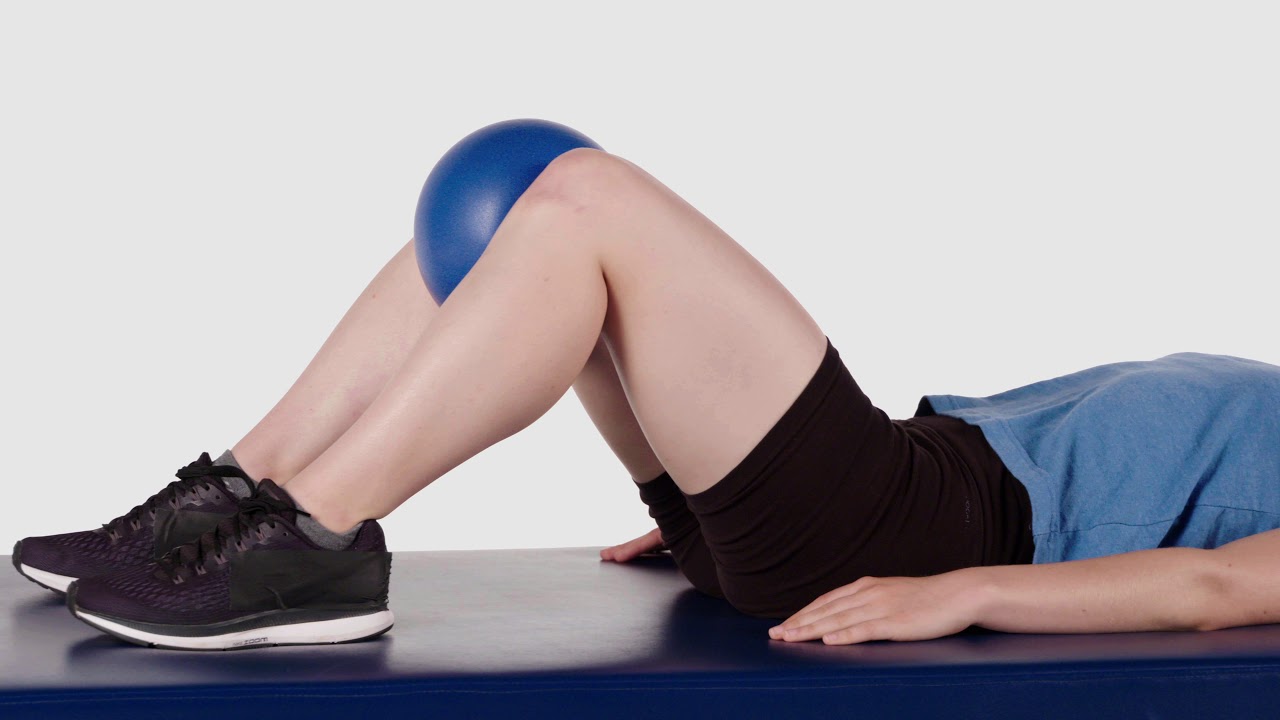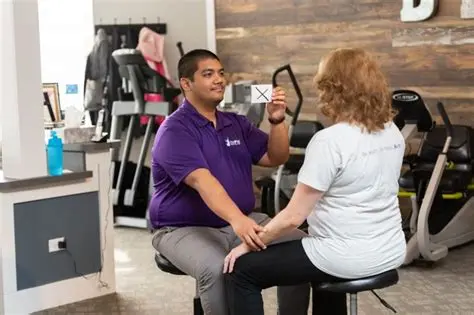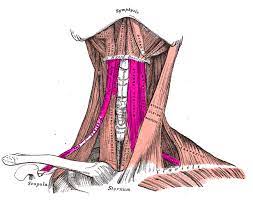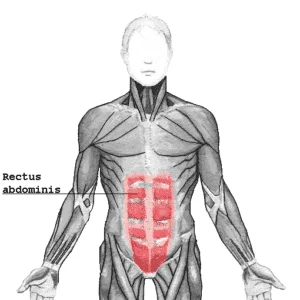Hip adductor muscles strengthening exercises
Table of Contents
What are the hip adductor muscle strengthening exercises?
- Hip adductor exercises utilize multiple small muscles (a group of Adductor muscles) in the inner thigh that are responsible for bringing the thighs together, furnishing balance as well as supporting & right hip alignment. Most someones might only think of doing hip adductor exercises whenever they step past the hip adductor machine in the gym but we are here to change that mentality.
- This is important to strengthen the hip adductor muscles to improve mobility as well as flexibility, enhance stability & prevent leg injuries.
- Having strong abductors is an integral part of sports performance, maintaining mobility, & injury prevention, as you age. It is an essential muscle group that donates to hip mobility & strength. In terms of strength training, the adductors are mostly overlooked due to they can be difficult to properly train.
What are the adductors muscles?
- The adductors muscles located in the inner thighs work to bring the legs toward the center of the body. This motion of bringing the legs inside is called adduction. This muscle is also understood as the groin muscle.
- When the patient squeezes the legs together, he will feel the muscles of the inner thigh activating, these are the adductors.
- The hip adductors are a bunch of five muscles in the inner thighs. The main motion of the hip adductor muscles is to adduct the hips or get the thighs together to the center of the body.
The hip adductors include the following muscles:
- Adductor Brevis muscle: The briefest muscle of the hip adductors, an adductor brevis is a triangular muscle placed behind the adductor longus & anterior to the adductor Magnus. The primary activity of the adductor brevis muscle is to adduct a hip. This muscle also recreates a major role in hip flexion & maybe even external rotation of the hip.
- Adductor Longus: This triangular-shaped muscle is the multiple anterior-located muscles of the hip adductors. The main motion of the adductor longus is hip adduction of the hip joint. This muscle also assists to do hip flexion and extension as well.
- Adductor Magnus: This muscle has fan-shaped. It is the largest hip adductor muscle. The adductor Magnus helps the hip flexion & the extension of the thigh.
- Gracilis: One of the weaker hip adductor muscles & this is located most superficial, the gracilis overlies the other adductor muscles. The gracilis muscle activity is the flexor & internal rotator of the leg from the knee joint.
- Pectineus: This is the short muscle of the hip joint. This muscle action both flexes & adducts the thigh at the hip joint.
What is the Contrast between Hip Adductors & Hip Abductors?
- Many individuals might get confused about the difference between the hip abductors & hip adductors even though they play opposite actions in the body. As mentioned above, the hip adductors are accountable for getting the thighs together at the center of the body while the hip abductor muscles are answerable for opening the thighs away from the body.
Health Benefits Of Hip Adductor Exercises
- The hip adductors are often disregarded when this comes to strengthening exercises but it is a mistake. By not strengthening these muscles the patient is leaving herself suffering from groin injuries.
Below explained some benefits of doing hip adductor exercises
- Better Balance: This exercise helps a patient to better balance as they keep their bodies upright when doing a sudden lateral movement. Some hip adductor exercises are also encouraged unilateral motion which engages the small muscles, and assists to increase balance.
- Enhanced Rotational Power: Strong hip adductors give the bodies produce more rotational power. An internal rotation of the hips required in some games such as baseball or even tennis requires rotational power & torque which is partly supported by these adductor muscles.
- Boost Hip Extension: Hip extension plays a major role in some of the big compound lifts such as squatting & deadlifts. Doing hip adductor exercises in the normal workout routine can increase the lifts, boost athletic performance & make daily living activities easier.
- Drop Risk of Injury: Groin pulls are common damage sustained by sportsmen & even in daily life. The cause of groin strain happens to owe to tight or weak hip adductors. By strengthening & stretching the adductor muscles the patient can reduce the chances of experiencing this injury.
- Athletes, in particular, depend on this muscle group to aid in explosive motions such as jumping, running, & quickly moving from side to side.
Here explained the Best Hip Adductor Strengthening Exercises
Hip Adductor Isometric Strengthening Exercise
- First of all, the patient has to take a supine position.
- After that, the physical therapist should put the ball or even pillow between the flexed knee, which was around 60 degrees flexed.
- Next, the physical therapist may tell the patient to squeeze the ball by doing the adduction. Once the patient completes the initial stage then go for the progression phase.
- In the progression, the therapist should tell the patient to hold the squeezed ball for around ten seconds.
- Perform this exercise ten times in one session. Do three sessions in one day.
Standing Leg Circles
- How to do this strengthening exercise:
- It is a dynamic warm-up exercise, this exercise increases blood circulation to the hip muscle & upper leg.
- To do this exercise, a patient has to stand with feet hip-width separated.
- Raise the left leg off the ground. While posing on the right leg, form a small ring with the left leg.
- Complete ten to twenty repetitions on the left side then move to the right leg.
- Note: If the patient has a balance problem then stand close to a prop where he can help to stabilize the body by holding something.
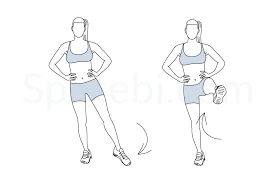
Sumo Squat
- How to do sumo squat strengthening exercises:
- This variation of the squatting will hit the large muscle groups in the lower limb plus the inner thighs.
- Keep the back straight & the chest up throughout the exercise.
- Even though the sumo squat has a smaller range of movement compared with a regular squat, this is still an effective exercise that can be incorporated into a normal workout.
- For this exercise, the patient has to stand wider than shoulder-width stance with pointing outside.
- Take a squatting position, drop the hip down & back while the back is straight & chest up until the thighs are parallel to the ground.
- Push off through the ground and come back to the starting position.
- Note: If the patient has the desire to add some challenge to the exercise then hold a kettlebell in the hand.
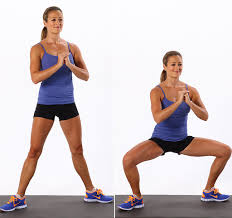
Cross Scissors
- How to do this strengthening exercise:
- This is an excellent exercise to work the hip adductor muscles & the core muscle simultaneously.
- Cross scissors are challenging as the patient needs to stay in the crunched position throughout the motion.
- Maintaining the position by crossing the legs in front of you requires all the stabilizing muscles to be contracted.
- For this exercise, the patient has to Sit down & brace themselves by putting the hands on the floor back to you. Move the leg off the ground in front of you at a 30-degree to 40-degree angle with one leg crossed over the other.
- The core muscle should be engaged throughout the motion in a semi-“V” position moving the legs out to the sides and then bringing them back closed during crossing the other leg over.
- Do this with the Alternate leg until you complete 10 to 20 repetitions on each side.
- Note: The patient can increase the difficulty of cross scissors by sitting in a “V” position without bracing the upper limb with the arms.
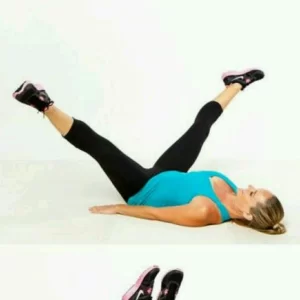
Dumbbell Side Lunge
- How to do this strengthening exercise:
- The side lunge is an excellent exercise to improve balance, stability, & lower limb strength.
The side-to-side motion is both a strengthening as well as a stretching exercise. This exercise utilizes the hip abductors & hip adductor muscles. - For this exercise, the patient has to stand with the shoulders hip-width apart & hold the dumbbells at chest level.
- Take a large step to the side & drop the hip down & back until the thighs are parallel to the ground while the foot is planted on the floor.
- Push through the flexed foot, and bring them back to the starting position.
- Repeat this for ten or twenty repetitions then move to the next leg.
- Note: To make this exercise easy the patient can do bodyweight side lunges. The back should be in a neutral position & chest up while trying not to lean forward.
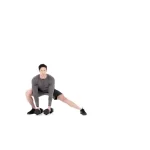
Cossack Squat
- How to do this strengthening exercise:
- This exercise moves the body through the frontal plane of movement, going side to side.
- Working the lower limb at this angle can improve the flexibility of the hips, knees, & ankles.
- The patient will enhance stability by mastering this exercise by getting a good stretch & strengthening the hip adductors.
- For this exercise, the patient has to stand with feet in a wide stance with toes pointing outside by dropping the hips downward & back.
- Squat down to that single side shift the weight during the other leg is extended out with the heels on the ground, toes pointing up.
- Push through the floor with the flexed leg and bring them back to embarking position.
- Repeat this exercise on the other leg by shifting the weight & lowering this down into a squat position on the other side.
- Note: This exercise requires a high degree of mobility so if the patient can not go all the way down then go as far as he can during trying to improve each workout. The back should be maintained in a neutral position throughout the exercise.
Copenhagen Side Plank
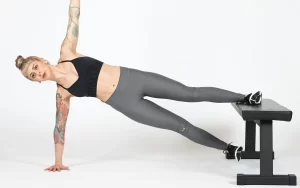
- How to do this strengthening exercise:
- This exercise is the most challenging variation of plank that not only hits the core muscles but also strengthens the hip adductors. This exercise will assist to balance out the strength in the muscles on the outside of the hip.
- For this exercise, the patient has to lie down on the ground & perpendicular to the bench and then brace himself on the forearm & elbows.
- Lift with the flexed knee lift the top leg & place this on the bench.
- Keep this position as much as possible by you.
- Complete ten to twenty repetitions for one to two sets then do this on another side.
- Note: Increase the difficulty by doing this exercise with the legs extended with only the ankle placed on the bench.
Cable Hip Adductor
- How to do this strengthening exercise:
- The patient may notice women at the gym doing this exercise during the men are avoiding it.
- This is time to change the stigma that cable hip adductions are not main, everyone should be doing this exercise to strengthen the adductors to decrease the risk of injury.
- Make sure the patient is warmed up with some dynamic stretches before performing this exercise then try to embark with less weight & maximum repetitions until the patient is comfortable enough to increase the weight.
- Find an attachment that the patient can use to strap onto the ankle closest to the pulley.
- Set up the pulley around calve level. Stand to the side of the pulley. Brace yourself using the hand against the machine in a safe place where the fingers will not get pinched. The active leg should be up off the ground towards the pulley.
- Pull the leg away from the pulley towards the middle of the body.
- Slowly let the leg come back to its starting position Completed desired number of repetitions
- Note: This exercise may also be done with this same technique by attaching the resistance band to a fixed anchor point.
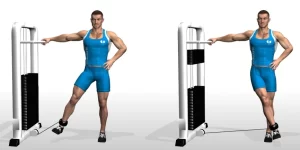
Seated Hip Adduction
- The seated hip adduction will isolate the hip adductor muscles when the patient is seated, only having to focus on bringing the thighs together.
- Add this exercise towards the end of the leg day after completing the bigger compound lifts such as squatting.
- Seat in the machine with the back against the backrest
- Set the width of the knee pads to a manageable position that gives a good stretch to the inner thighs but does not overstretch the adductor muscles
- Set up a lightweight for the first time set so that the patient does not overdo it.
- Squeeze the thighs together during exhaling, until the knees meet in the center of the body.
- Gradually come back to the starting position.
- Complete maximum repetitions.
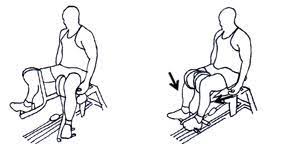
Adductor machine
- How to do this strengthening exercise:
- Most individuals think of isolating the adductors, they may think of the classic adductor machine found in gyms across the world.
- Though this machine may do an excellent job of training the adductor, this is not the only motion that may yield good results.
- Considering that the patient can adjust the amount of weight & width of the pads, this exercise is great for beginners. This is best to start super light to get a feel for the exercise & avoid getting injured.
- For this exercise, a patient has to sit on the machine start sitting on a machine with the pads positioned between the legs as wide as is comfortable, & select the ability-wise resistance.
- In a controlled manner, contract the thighs together just until the pads touch, feeling the muscles contract.
- Gradually reverse the motion, returning the thighs to the starting position. Repeat this exercise around ten times in one session. Do three sessions in one day.
- If just starting, try one to two sets of ten repetitions.
Wide stance squat
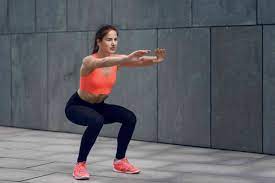
- How to do this strengthening exercise:
- Squatting is a king of leg exercises & this will strengthen the whole leg.
- There have different squat variations but here we discuss the wide stance squat also known as the sumo squat which will utilize the inner thigh muscles.
- They can do this exercise with a variety of weighted equipment namely a barbell, kettlebell, dumbbell, or even sandbag, or with just only the body weight.
- For this exercise, the patient has to stand a little wider than the shoulder hip-width apart and turn the toes outside.
- Shift the weight backward & slowly lower the hips until the thighs are parallel to the floor.
- Then come back to the starting position by pushing through the ground, the inner thigh muscles are contracted.
- Do nearly 10 to 12 times in one session. Perform three sessions in one day.
Standing banded adduction
- How to do this strengthening exercise:
- For this exercise, the patient needs a resistance band, and wrap the resistance band on a solid anchor. The patient has to stand on either side of the body facing the anchor point and the resistance band.
- Allow a resistance band to pull the leg to the side by resisting the motion.
- To start this exercise the patient has to stand tall & bring the banded leg toward the midline of the body, the patient feels a good contraction in the inner thighs.
- Gradually release the leg back to the side with a control motion.
- Switch the legs & do ten to twenty repetitions for one to two sets on each leg.
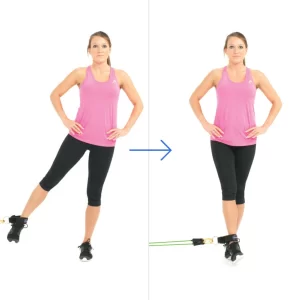
Seated banded adduction
- How to do this strengthening exercise:
- For this exercise, the patient needs a resistance band, and wrap the resistance band on the solid anchor.
- The patient has to sit on the bench on either side of the body facing the anchor point & a resistance band.
- Put the internal foot through a resistance band, a band is positioned just below the knee joint. Allow a resistance band to pull the leg toward the anchor point.
- Move the leg towards the center of the body by contracting the adductor muscle.
- Repeat this on both legs.
- Perform 10 to 20 repetitions in one session. After that, do two sessions of this exercise in one day for the perfect strength.
Lateral lunge
- How to do this strengthening exercise:
- To do a lateral lunge exercise, a patient has to stand with feet hip-width apart. Step out of the left leg & start by sending the hip back as you flex the left knee.
- The patient can reach the arms forward for counterbalance if you like. While the descent, the knee should not move more than two inches beyond the toes, & the knee should be aligned between one and two toes.
- The toe turns outwards slightly. Push off through the left to come back to the starting position.
- Repeat on the right side leg to complete the first repetitions.
- Do two to three sets of ten to twelve repetitions on both legs.
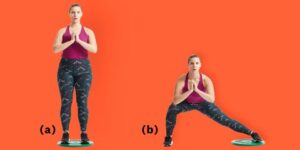
Single-leg glute bridge with a squeeze
- Equipment required: Foam roller or small swiss ball
- First of all, the person has to lie on the back with the knees bent as well as feet flat on the floor.
- After that place the foam roller or even a small swiss ball between the thighs. Next, the arms should be by the side.
- Then, lift one left up into the air, leaving the other remaining on the floor.
- Push the hips up towards the sky, squeezing the glutes in the top position. Simultaneously, now squeeze a foam roller or ball between the thighs.
- Lower the hips back to the floor.
- Repeat ten times in one session. Do three sessions in one day.
- In progression:
- After squeezing hold that position for around five to ten seconds for proper strength. Do this practice five times in one set. Do two set in one day.
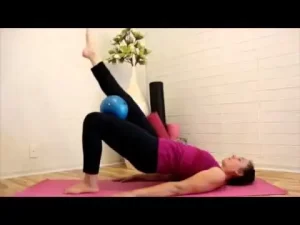
Side leg raises
- Equipment needed: Floor mat
- This must-do hip adductor exercise is similar to a side-leg raise.
- To start with, the person should lie on the floor mat, resting on the side. The individual can prop the head on the elbow for support or rest this on an extended arm.
- After that, lift the top leg up in the air, and hold this as straight as possible.
- Now, keeping the top leg suspended mid-air, bring the other leg up to meet this.
- Once the legs touch in the air, lower the bottom leg down to the floor.
- One time the bottom leg touches the floor, raise this again to meet the other.
- Repeat this same exercise on one side before changing to the other.
- Do this exercise ten times in one session. Do three sessions in one day.
- Notes: The height of a suspended top leg depends on the fitness level. The higher it is, the harder it will be to keep this mid-air while raising the bottom one. The lower it is, the easier it will be to control.
Slider side lunge
- Equipment required: Sliders
- First of all, the patient has to stand with the feet shoulder-width apart. After that, one foot should be on the floor & the other should be standing on one slider.
- Next, engage the core & do a side lunge, with the foot on the slider sliding out instead of stepping out.
- Then, go as low as the person can before contracting the abdominal muscles tightly & sliding the leg back to the middle, standing up whilst doing so.
- Complete the repetitons on one side before switching to the another.
- Do around ten repetitions in one session. Do three sessions in one day.
- In progression:
- The patient has to do the same exercise as mentioned above, but he has to hold the end position of the hip adduction for around ten seconds.
- Do five to seven repetitions in one session. Do two sessions in one day.
- Notes: If the person does not have sliders available, then using a plastic bag or even a towel on a hard, smooth surface will suffice.
Slider plank jacks
- Equipment needed: Slides
- To embark with, the person gets into the plank position, with the wrists directly beneath the shoulders as well as the arms straight. The legs should also be straight behind his. Make sure that the patient is also on the toes, but standing on one slider for each foot. The feet are close together.
- In one smooth as well as controlled movement, spread the legs, using the sliders to slide them out wide. Ensure that the patient is engaging the abdominal muscles to maintain a straight body. The wider the legs go, the harder the exercise is.
- Slide the feet back close together again.
- Repeat this exercise ten times in a session. Do two sessions per day.
- Notes: Just like with a plank, the person needs to make sure that the back is straight as well as the pelvis is tucked in. Do not let the hips sag to the ground with the back arching or push the hips up too far in the air. Maintain a straight line.
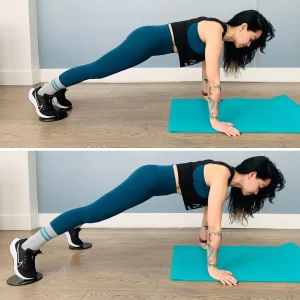
Kneeling slider adduction
- Equipment needed: Sliders
- To start with, the patient must be in a Kneeling position on the floor with one slider beneath each knee but make sure he is sitting up. The person should have a straight line from the knees to the head.
- After that, slowly slide the knees apart as far as he can go. Engage the core so that the person remains upright. The feet should remain close together behind you.
- Next, bring himself back to the embarking position by closing his knees.
- Repeat this exercise ten times in one session. Do two sessions per day.
- In progression:
- The patient has to hold the adduction end position for around ten seconds. Do this progression exercise five to six times in one session.
- Increase the repetitions over time.
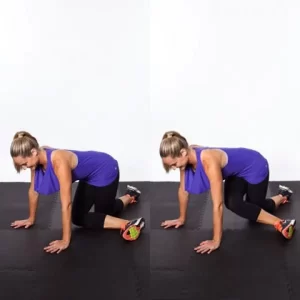
Standing side Leg Raise
- How to do this strengthening exercise:
- It is an excellent bodyweight exercise that may hit the hip adductors of one leg during hitting the hip abductors of the other leg as the patient will be using an isometric hold on the other leg to keep this in the air.
- For this exercise, the patient has to stand with a shoulder hip-width apart. Now on the left leg away from the body.
- After that, Lift the right leg as far as comfortable, & hold it there for 4 to 6 seconds.
- Raise the left leg to the right leg until they touch then lower back to the starting position. Complete ten to twelve repetitions of one to two sets.
- Note: To make this exercise hard strap ankle weights to both legs.
When did the patient not do this exercise?
- If the physical therapist is recommended the patient to take rest.
- If the patient is already suffering from back & knee pain.
- If the lower limb bone is recently fractured.
- If the patient feels pain while this exercise.
FAQ
Adductors play an important role in hip stability, & pelvic rotational control, meaning these results can also be applied outside of
‘cutting’ sports, with sports such as long-distance running requiring significant hip as well as pelvic control.
Squats may also be a telltale sign of hip adductor weakness, says Laudner: “If the knees point outward while a squat, then there could
be an imbalance of hip strength with the hip adductors being weaker than the reciprocal hip muscles (hip abductors).
Underuse of the muscles or even sitting down for extended periods may cause weak hip flexors. Conditions namely osteoarthritis may
also, cause weakness in the muscle group.
Even though weak or inhibited glutes can only pose as tight hamstrings & adductors initially, over time this may lead to injuries such as:-
Anterior knee pain- ACL injuries, Low back pain, Hamstring strains, Hip impingement, Ankle sprains Gluteus Medius Muscle: The gluteus
medius’ primary function is hip abduction
Along with this are many health benefits, walking also exercises several different muscles. The primary muscles used in walking include
the quadriceps as well as hamstrings, the calf muscles & the hip adductors.
Hip abductor weakness is known to contribute to issue such as shin splints, & foot hyperpronation (flat feet). Foot hyperpronation & hip abductor weakness are comprehended by biomechanical coconspirators. Gluteus medius weakness increased pressure on the inside of
the foot, reducing the typical arch of the foot.
The most common symptom of a tight adductor also known as a groin pull is pain in the medial thigh at the site of the strain. Pain
is usually sharp when an injury is acute, & transitions to being duller in quality when the condition is chronic. Pain increases if the
area is palpated.

